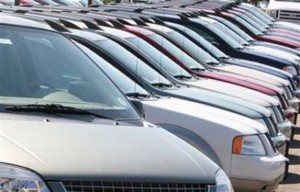Analysts have waffled for a while about whether or not the U.S. can sustain the record level of new car sales throughout 2017. But LMC Automotive is climbing off the fence and predicting another year of record sales.
Jeff Schuster, senior vice president of forecasting at LMC Automotive, said that LMC is forecasting total light-vehicle sales in 2017 to be at 17.6 million units, an increase of 0.1% from 2016. Retail light-vehicle sales are expected to reach 14.1 million units in 2017, essentially flat from 2016, according to Schuster.
“After an overheated close to 2016 and the increased likelihood of deregulation and fiscal stimulus from the Trump administration driving the economy higher, we now expect 2017 to be another record year in U.S. auto sales, though there is a lot of runway before the year is complete,” Schuster said.
“While there are many variables to consider this year, one area of caution is the large number of lease maturities repopulating the used-car market. It creates demand for a vehicle, but also more used-vehicle options to compete with the new-vehicle market,” he added.
(Analysts predicting dip in January auto sales. For the story, Click Here.)
Higher stock prices, rising consumer confidence and expectations that economic growth will exceed the 1.6% growth in gross domestic product posted by the U.S. economy all suggest solid car sales during the coming year.

Analysts did warn that the rise in leasing could provide an influx of late-model used cars that could derail new car sales.
Last fall, the University of Michigan’s influential Research Seminar on Quantitative Economics, which is responsible for the university’s economic forecasts, predicted a small drop in the sales of new vehicles in 2017.
“In the near term, we expect manufacturer incentives and light vehicle sales to remain above levels we consider sustainable due to elevated vehicle inventories. We project light vehicle sales to decrease by 0.1 million units every year in 2017 and 2018,” the U-M forecaster predicted.
New-vehicle retail sales in the U.S. in January are expected to reach 874,400 units, a 2% decline compared with January 2016, while total light-vehicle sales are expected to reach 1,125,900 units, a 1.8% decline, according to a new analysis by J.D. Power & Associates and LMC.
(Ford earnings dip 38%. Click Here to find out why no one is surprised by the slide.)
The total seasonally adjusted annual rate of sales or SAAR was expected to be 17.3 compared with 18.4 last month and 17.6 in January 2016, J.D. Power-LMC Analysts said.
“With sales posting impressive gains at the end of December, the slow start to January was not unexpected,” said Deirdre Borrego, senior vice president of automotive data and analytics at J.D. Power.
“While this year will mark the first time that the industry has started off with a retail sales decline since 2010, the retail SAAR remains robust. The challenges for the industry remain maintaining profitability while coping with high inventory levels and elevated incentives, which continue to rise year over year.”
Through the first 10 days of January, incentive spending per unit was $3,614, down $387 from December when the industry’s promotional activity was it its peak but up $232 from January 2016 when it stood at $3,382. Manufacturers have noted that the increase in incentives have not matched the increase in transaction prices.
(FiatChrysler posts nearly $2B profit for 2016. For more, Click Here.)
The data from J.D. Power & Associates indicates the average new-vehicle retail transaction price to date in January is $31,473, a record for the month, and surpassing the previous high of $30,826 set in January 2016.

